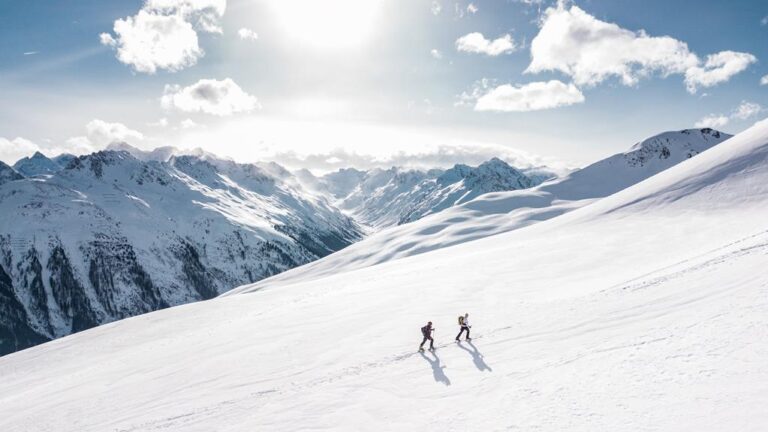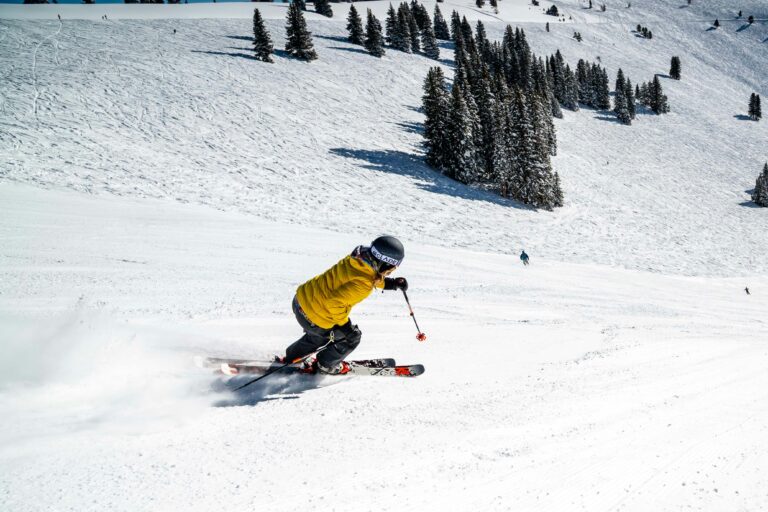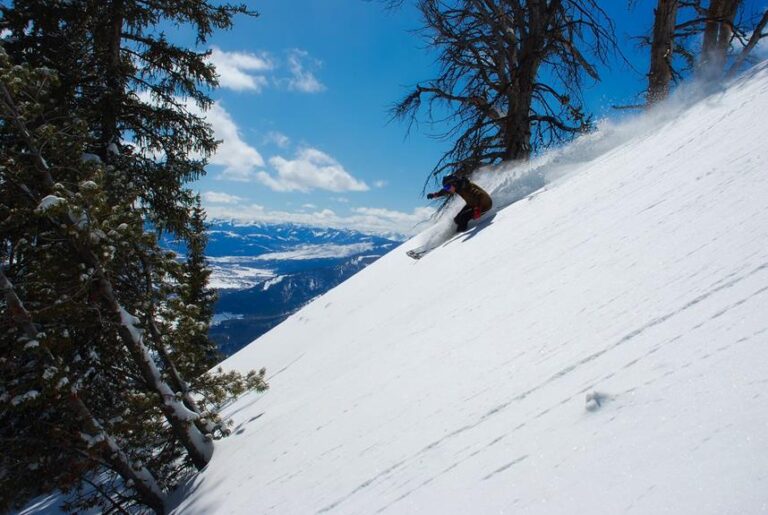Parabolic Skis Vs Straight – What You Need to Know!
So, you're wondering whether to strap on a pair of parabolic skis or stick with the old-school straight ones, huh?
Well, let's just say that you might find yourself feeling a little bit like a dinosaur if you choose the latter. While straight skis may have their nostalgic charm, parabolic skis have taken the skiing world by storm, revolutionizing the way we glide down those snowy slopes.
But what is it about these curved wonders that has everyone buzzing? And are there any advantages to the traditional straight skis?
Get ready to uncover the secrets of these two ski shapes and discover which one will have you tearing up the mountain with style and ease.
Ski Shape Comparison
When comparing ski shapes, it's important to understand the differences between parabolic skis and straight skis.
Parabolic skis, also known as shaped skis, have a symmetrical open plane curve called a parabola. This design makes them easier to turn and offers improved performance on groomed trails.
On the other hand, straight skis are the traditional design without any curve or shape to the base. The lack of shape in straight skis makes them more challenging to turn and maneuver on the slopes.
The ski shape comparison goes beyond just the curve of the skis. Shaped skis encompass any ski that isn't a traditional straight design. The depth of the sidecut, which refers to the width difference between the tip, waist, and tail of the ski, determines how the ski handles. Parabolic skis typically have a deeper sidecut, allowing for quicker and tighter turns compared to straight skis.
In terms of transitioning from straight skis to parabolic skis, it can be quite a challenge. The softness of beginner skis can make the transition difficult. Therefore, it's easier to adapt to shaped skis that are on the stiffer side. Additionally, the rocker in skis, especially with early rise in the tips and tails, makes it easier to initiate turns and excel in powder by encouraging upward movement and floatation.
When choosing the right ski shape, it's important to consider personal preference and skiing style. While ski sizing is subjective, it's recommended to size towards the expert side. Skiers should also choose their waist width based on their preferences and skiing style.
Benefits of Straight Skis
Straight skis offer several benefits that make them a favorable choice for certain skiers.
One of the key advantages of straight skis is their enhanced stability on flat surfaces. Due to reduced drag compared to parabolic skis, straight skis provide better control and stability when skiing in a straight line. This stability is particularly beneficial for downhill racing and ski jumping, where maintaining control at high speeds is crucial.
Another advantage of straight skis is their better float in heavy powder. The design of straight skis allows for greater surface area contact with the snow, enabling skiers to glide more effortlessly through deep snow conditions.
Additionally, straight skis have a wider turning radius compared to parabolic skis. This wider turning radius offers versatility for skiers in certain situations, such as navigating wide open slopes or carving long turns.
Benefits of Parabolic Skis
Parabolic skis offer a range of benefits that enhance your skiing experience. Shaped skis, also known as parabolic skis, have a unique design that sets them apart from traditional straight skis. One of the major advantages of parabolic skis is their improved maneuverability. The turning radius of these skis is smaller, thanks to their sidecut radius, which allows for quicker response and enhanced turning ability. This means that you can easily navigate through various terrains with ease and confidence.
Additionally, the parabolic shape enhances overall performance on the slopes. It provides smoother and more stable carving, giving you better control and stability. With parabolic skis, initiating and completing turns requires less effort, reducing fatigue and allowing for longer, more enjoyable skiing sessions.
These skis are also versatile, catering to a wide range of skiers, from beginners to advanced. Their forgiving nature and ability to adapt to different skiing styles make them suitable for skiers at various skill levels. If you prefer groomed trails, parabolic skis are an excellent choice. They excel on well-maintained slopes, offering enhanced stability and precision.
Maneuverability and Control Comparison
With their smaller sidecut radius, parabolic skis offer enhanced maneuverability and control on the slopes. The unique design of parabolic skis allows for quicker and more responsive turning, making them ideal for skiers seeking increased maneuverability. Compared to straight skis, parabolic skis have a smaller turning radius, which means you can make tighter, more precise turns. This improved maneuverability gives you better control over your skis, allowing you to navigate turns with ease and confidence.
To better understand the differences between parabolic skis and straight skis in terms of maneuverability and control, let's take a look at the following comparison table:
| Parabolic Skis | Straight Skis | |
|---|---|---|
| Sidecut Radius | Smaller (e.g., 15m) | Larger (e.g., 25m) |
| Turning Ability | Quicker and more responsive | Slower and less agile |
| Control | Enhanced control on groomed trails | Less control on groomed trails |
| Suitability | Suitable for a broader range of skiers | More suitable for expert skiers |
As you can see, parabolic skis offer a significant advantage in terms of maneuverability and control. Their smaller sidecut radius allows for quicker turning, giving you the ability to navigate the slopes with precision. This enhanced control is particularly beneficial on groomed trails, where you can confidently carve your turns. Whether you are a beginner or an experienced skier, parabolic skis provide the maneuverability you need to conquer the mountain.
Choosing the Right Ski for You
When selecting the perfect ski for your needs, consider factors such as your skiing style, experience level, and preferred terrain.
The evolution of ski technology has given us a variety of options to choose from. Traditional straight skis are still available, but shaped skis, including parabolic skis, have gained popularity due to their improved turning ability and ease of use.
If you're a beginner or enjoy cruising down groomed slopes, straight skis may be a suitable option. They provide stability and control, making it easier to maintain your balance.
On the other hand, if you prefer a more dynamic and playful skiing experience, shaped skis are worth considering. With their curved design, they allow for effortless turns and increased maneuverability.
Additionally, modern skis are built to be durable, lightweight, and designed for specific skiing styles. So, whether you're carving on groomers, exploring off-piste terrain, or hitting the park, there's a ski out there that will cater to your preferences.
Take the time to research and demo different options to find the ski that suits you best.
Frequently Asked Questions
How Do I Know if My Skis Are Parabolic?
To identify if your skis are parabolic, look for the symmetrical open plane curve called a parabola on the sides. Parabolic skis offer improved turning performance, making beautiful turns with less effort. Transitioning from straight skis to parabolic skis is a game-changer.
What Are Straight Skis?
Straight skis are the original style of alpine skis. They have parallel sides, offering reduced drag and stability on flat surfaces. They have a wider turning radius and are preferred for downhill racing and ski jumping.
What Do Different Shaped Skis Mean?
Different types of ski shapes, such as parabolic skis, offer advantages like better control and easier turning. The shape of the ski impacts your performance on the slopes, allowing for improved skiing abilities.
How Do You Ski on Shape Skis?
To ski on shaped skis, you need to adjust your technique. Focus on carving turns by leaning into the edges and engaging the sidecut. It may take some time to get used to, but soon you'll be shredding the slopes with ease.
Conclusion
In conclusion, when it comes to choosing between parabolic skis and straight skis, the parabolic skis are the clear winner.
Their curved design and wider tips and tails make for easier turning and better control on the slopes.
With parabolic skis, skiers can enjoy beautiful turns with less effort, resulting in a more enjoyable skiing experience overall.
So, if you want to enhance your maneuverability and control on the slopes, parabolic skis are the way to go.






